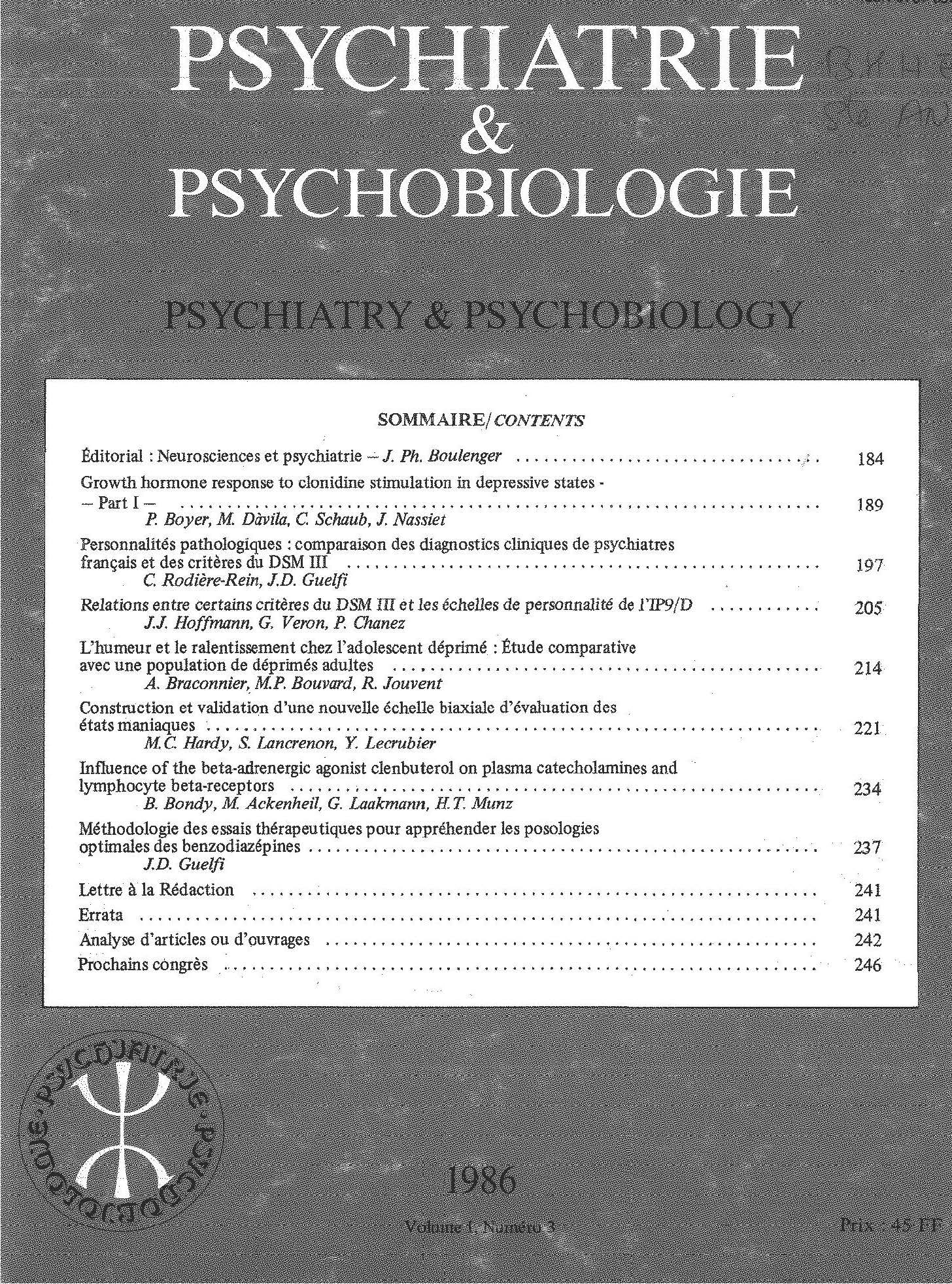Article contents
Le bâillement
Published online by Cambridge University Press: 28 April 2020
Résumé
Nous nous sommes proposé de rassembler les connaissances actuelles sur le bâillement. Ce comportement, largement retrouvé dans le règne animal et présent durant toute la vie de l’homme, n’a paradoxalement que peu excité la curiosité des médecins.
Après une description du bâillement et des phénomènes qui l’accompagnent, on trouvera une revue des étiologies, tant physiologiques que pathologiques. Seront ensuite abordées les hypothèses relatives aux mécanismes neurobiologiques et aux fonctions de ce comportement.
Les récents travaux sur les bâillements pharmacologiquement induits chez le rat ont mis en évidence le rôle de certaines structures neuronales dans la survenue de ce phénomène: les voies dopaminergiques inhibitrices, modulées par une voie sérotoninergique provenant du raphé dorsal, l’axe hypothalamo-hypophysaire dont les peptides ont une cible centrale, les fibres cholinergiques, activatrices in fine d’une structure génératrice du bâillement (Tableau I).
Au sein des différentes hypothèses sur les fonctions du bâillement, la stimulation de la vigilance nous paraît une notion fondamentale. En effet contrairement à l’idée couramment répandue, le bâillement ne nous mène pas vers le sommeil, mais nous ramène vers l’éveil.
Summary
Yawning is a common behavior among animals and is attested all through man's life; paradoxically, medicine has shown scant interest in it.
After providing a description of yawning with its accompanying phenomena, its etiology, including its physiological as well as pathological aspects, is presented. Neurobiological mechanisms as well as the functional aspects of this behavior are then examined.
Recent studies on drug induced yawning in rats have elucidated light the role of some neuronal structures linked to its occurrence. These include: inhibitory dopaminergic pathways modulated by the dorsal raphe through a serotoninergic link, a hypothalamo-pituitary axis, some peptides of which possess a central target, cholinergic fibers that activate, in fine, a central yawning pattern generator (Table I).
Among the various hypotheses considered, the authors stress the vigilance-enhancing factor. Contrary to commonly received notions, yawning does not lead to sleep, but to wakefulness.
Keywords
- Type
- Mise au point
- Information
- Copyright
- Copyright © European Psychiatric Association 1988
References
Références
- 7
- Cited by



Comments
No Comments have been published for this article.